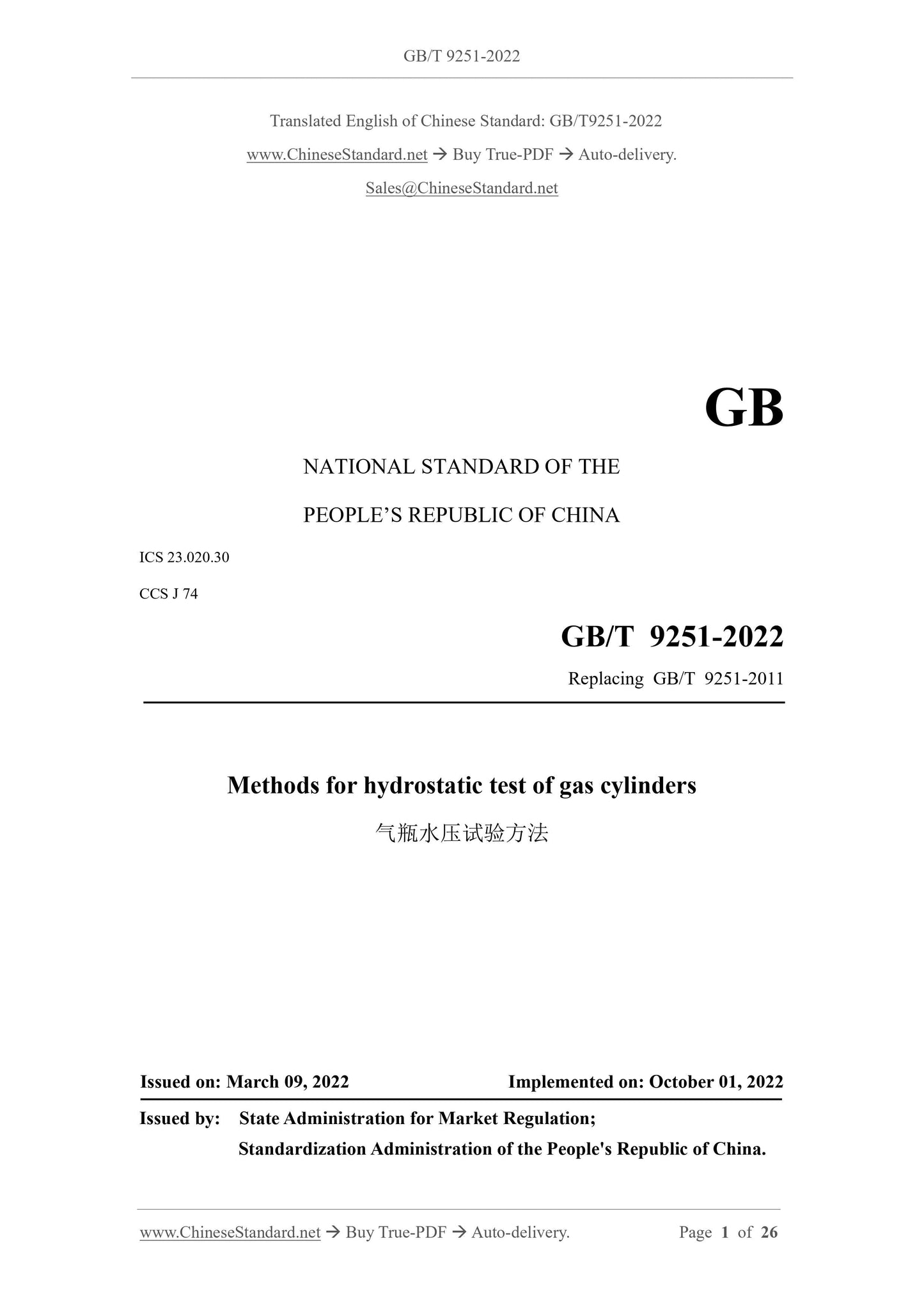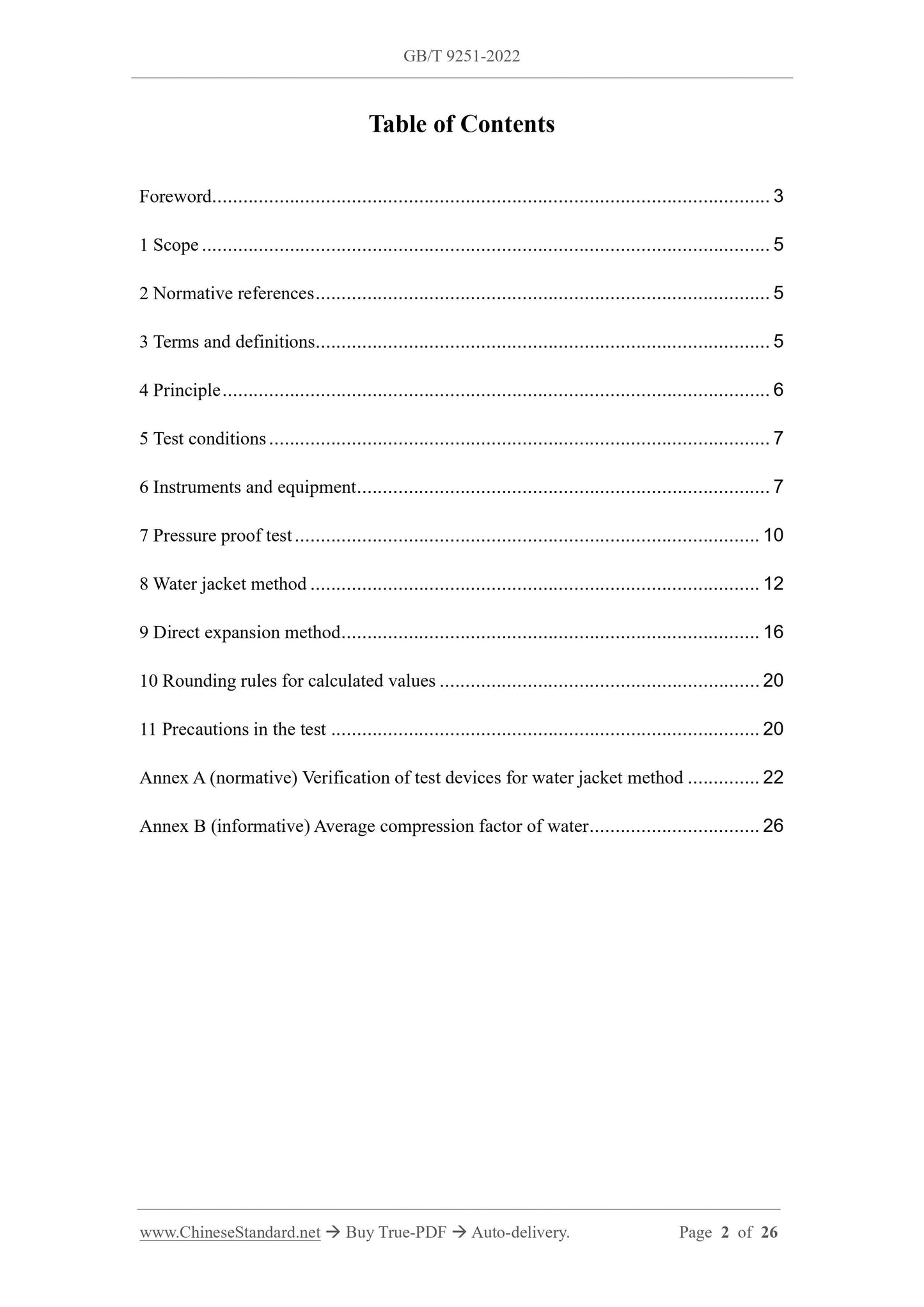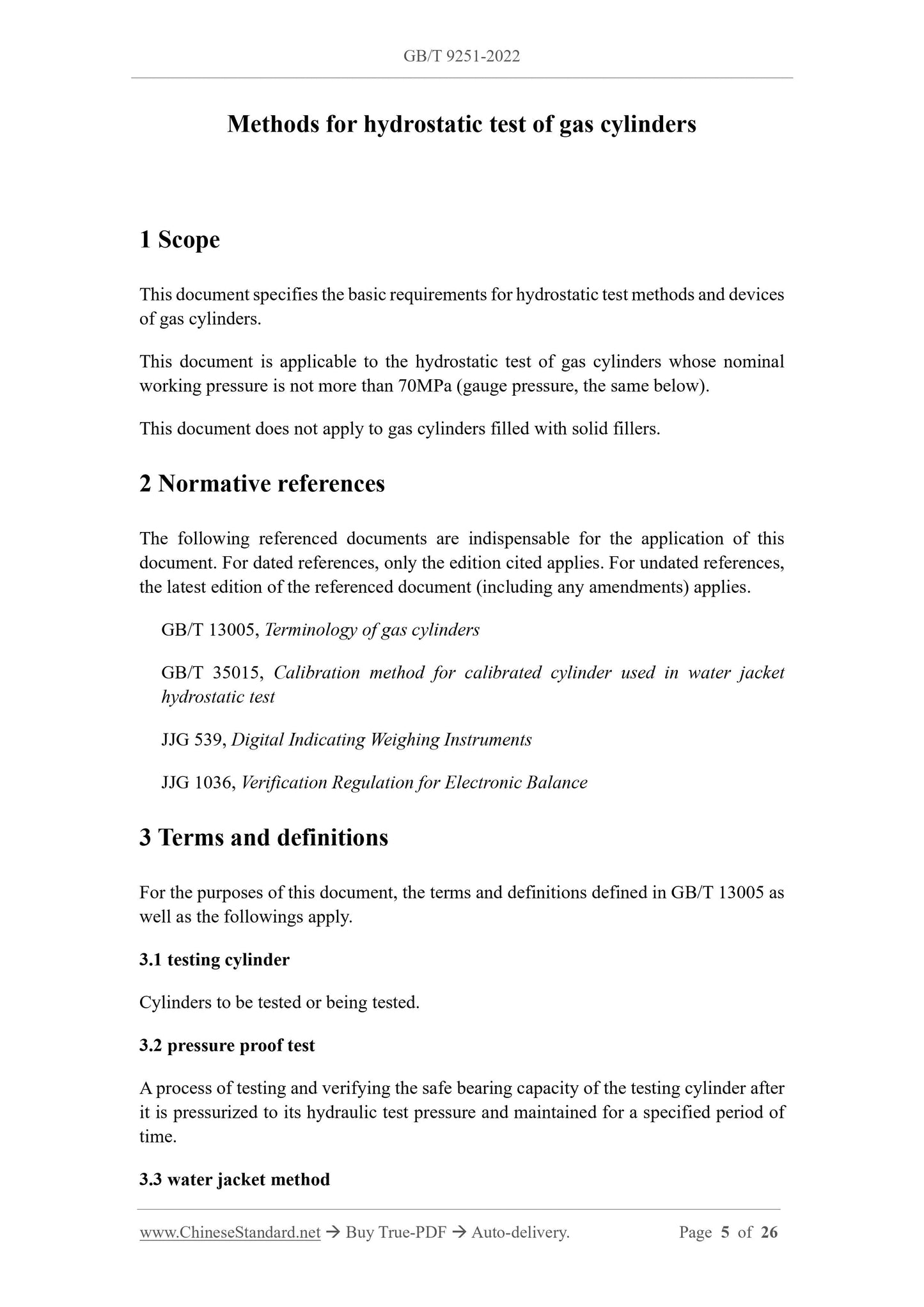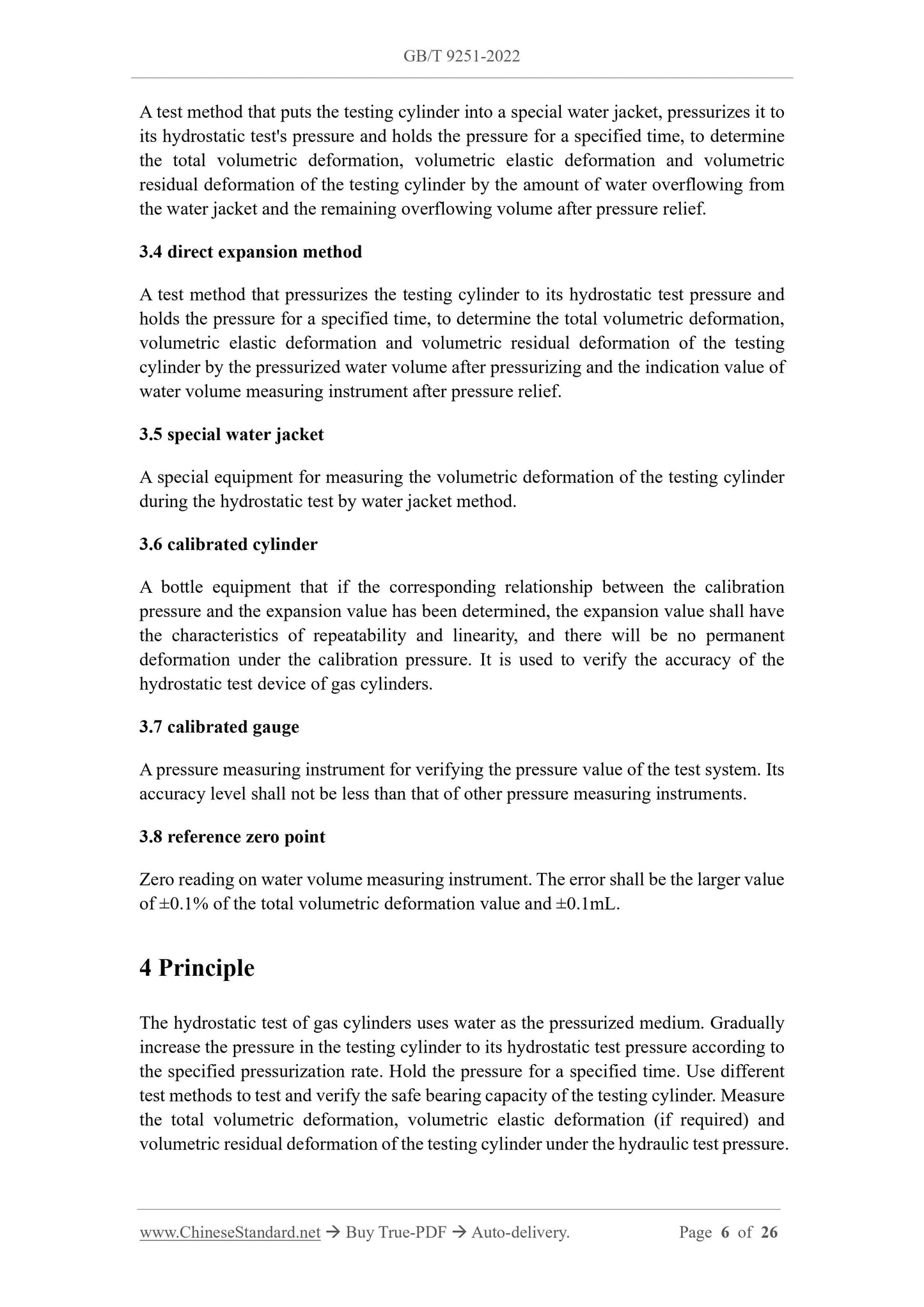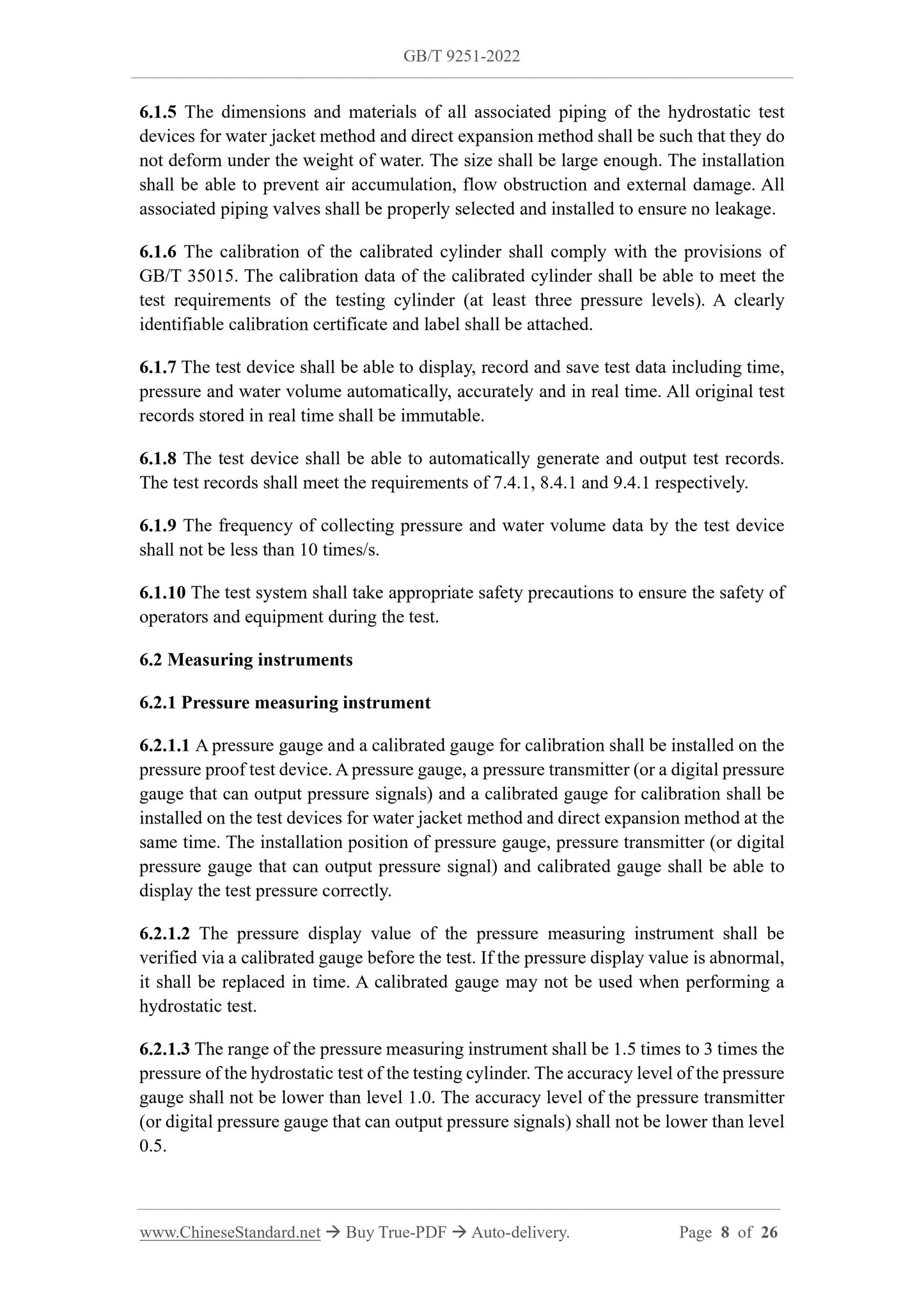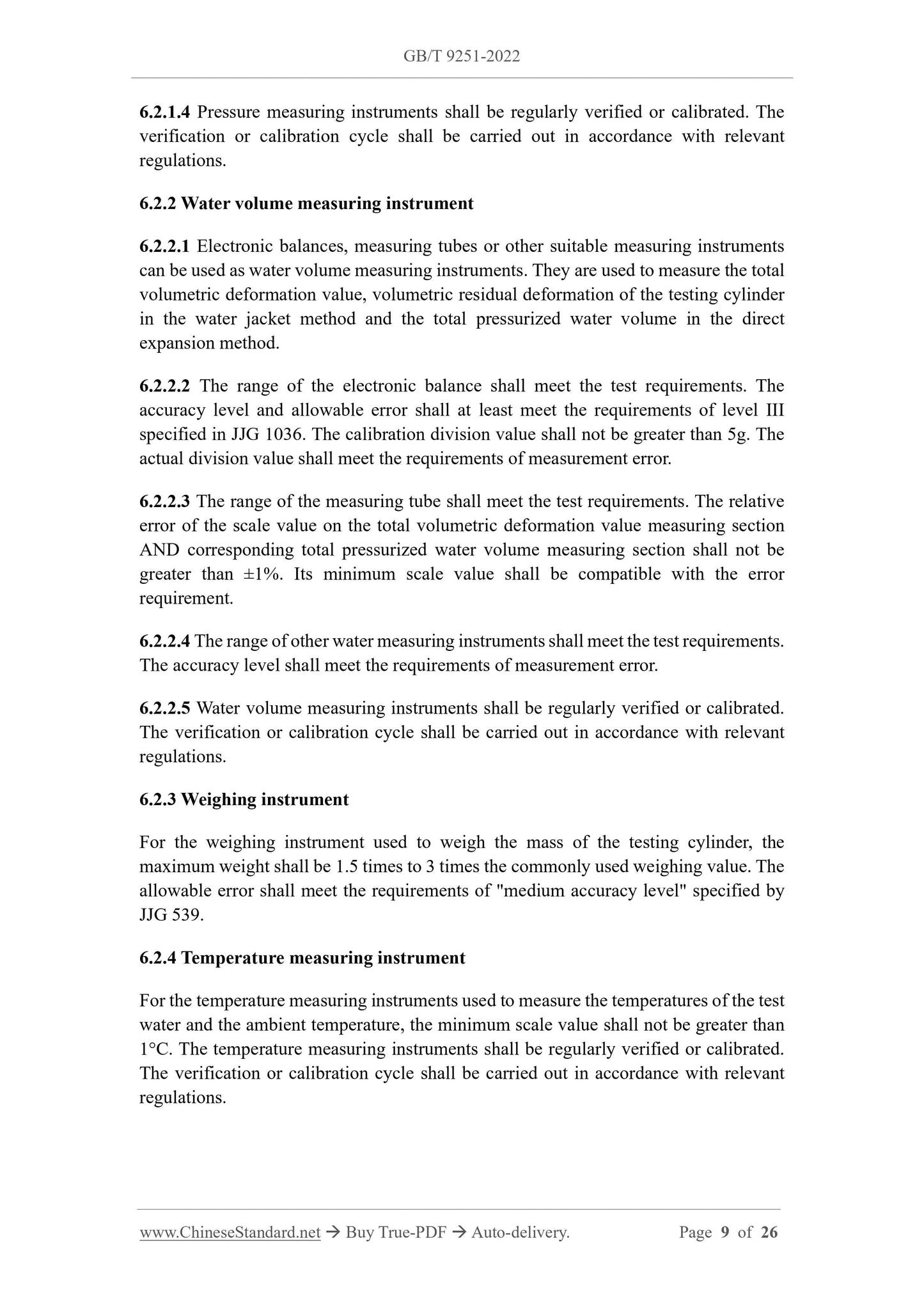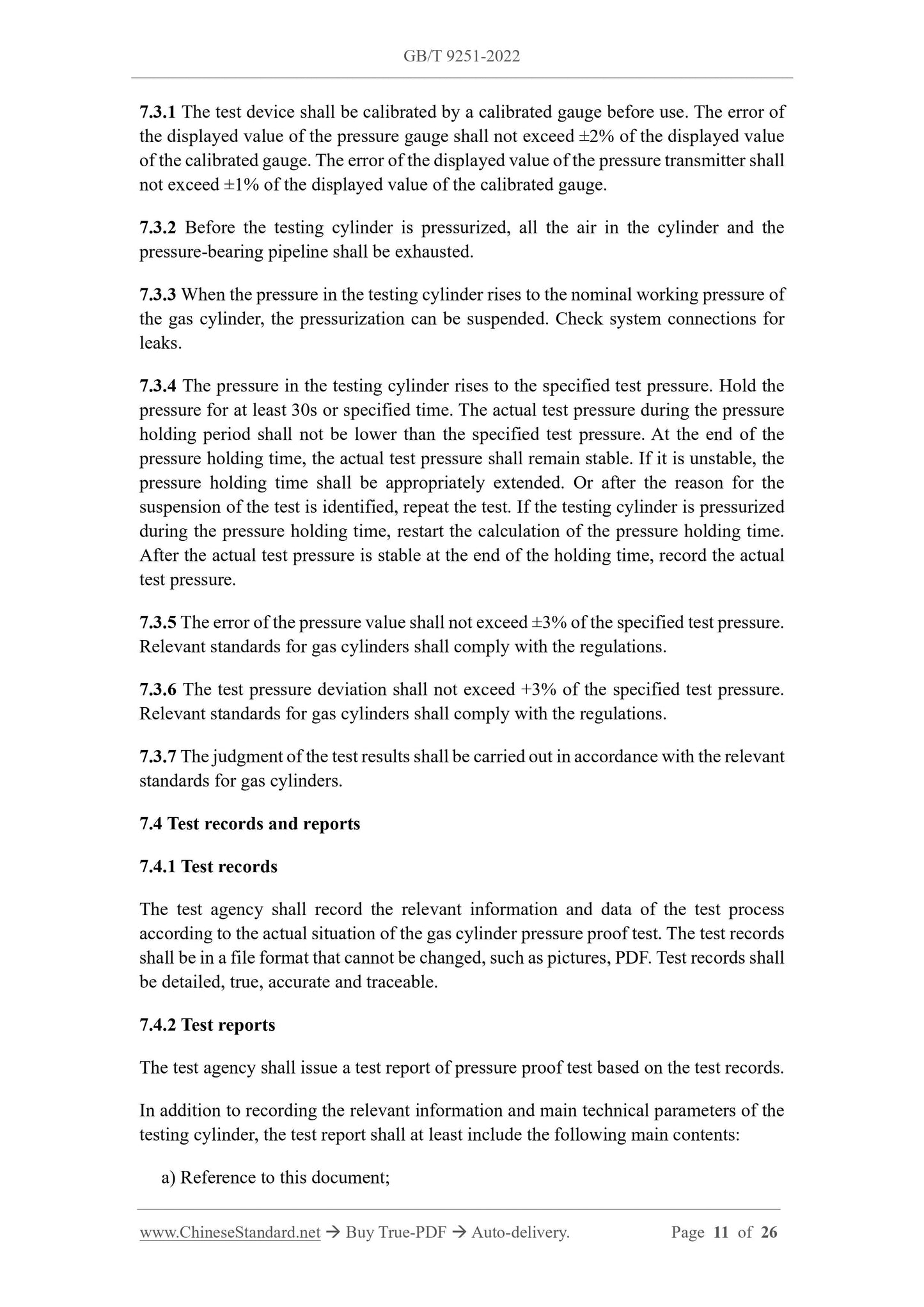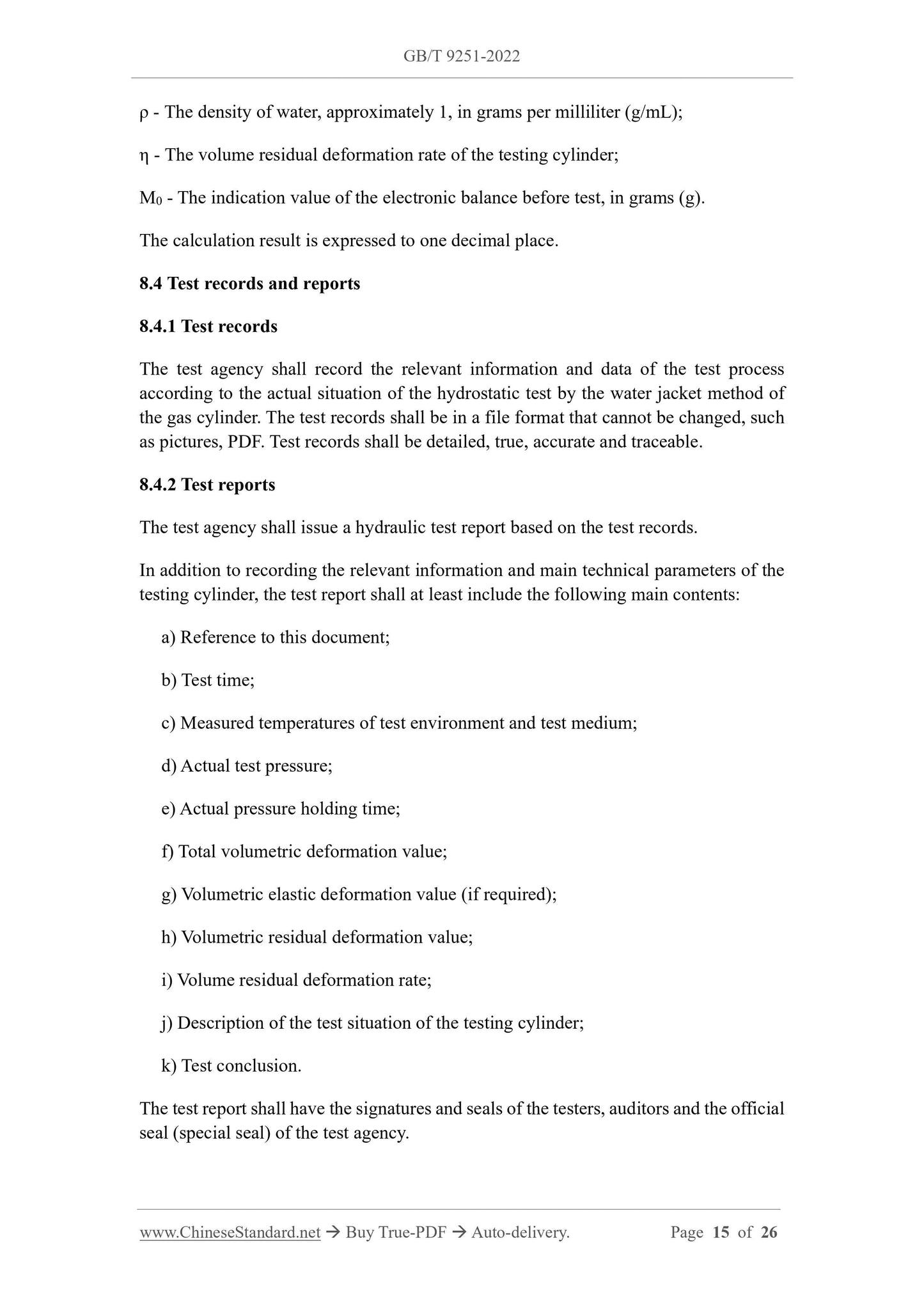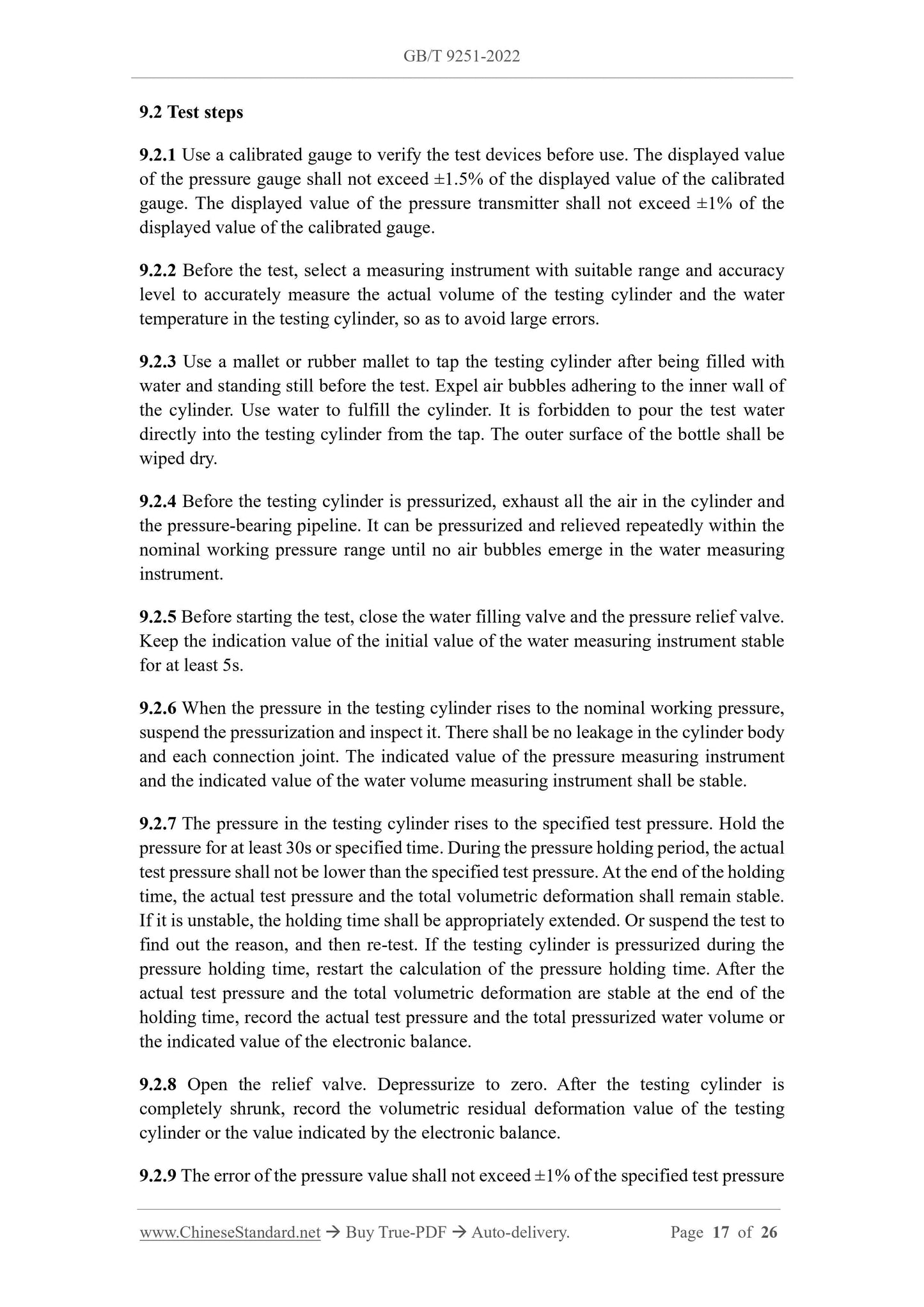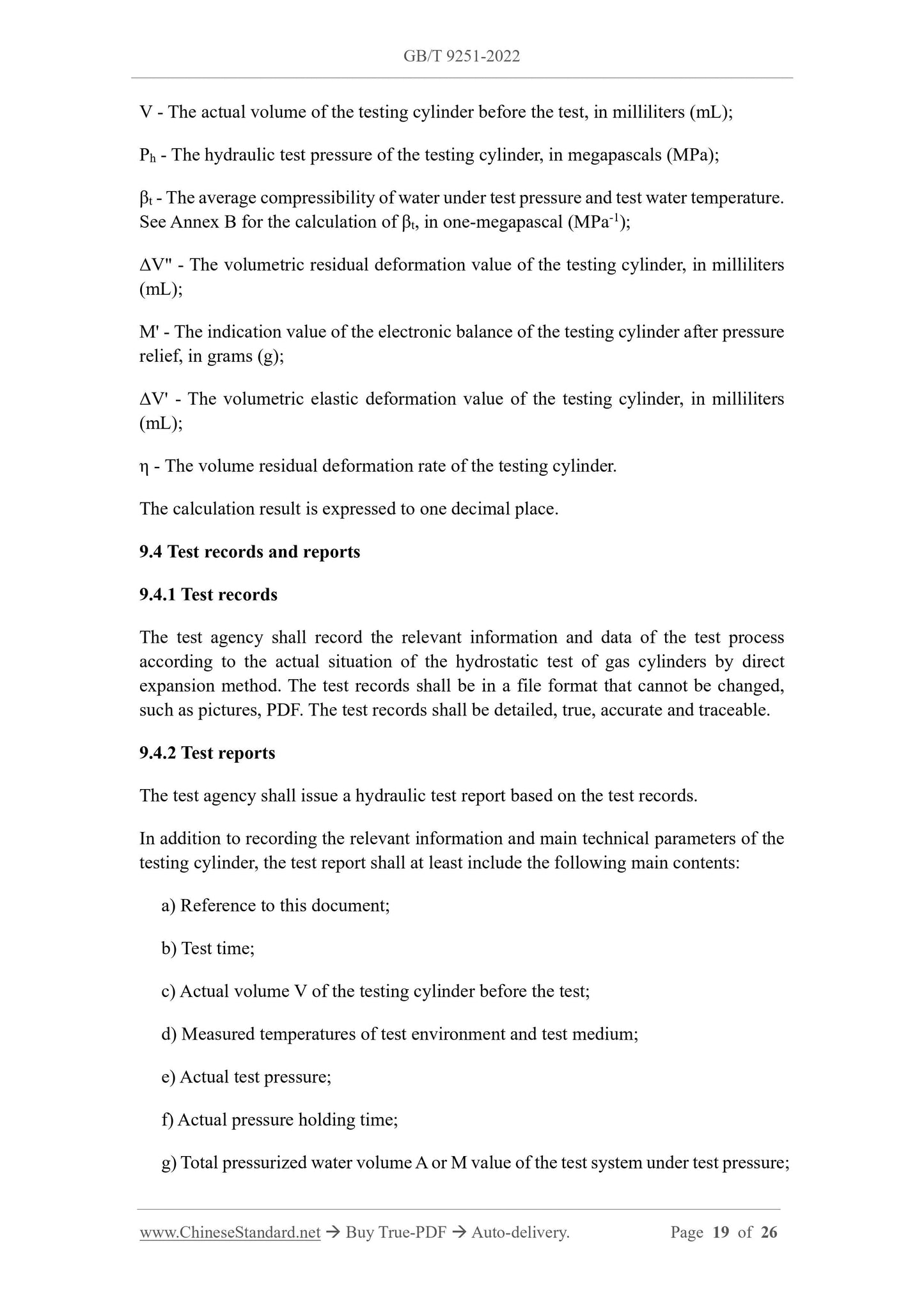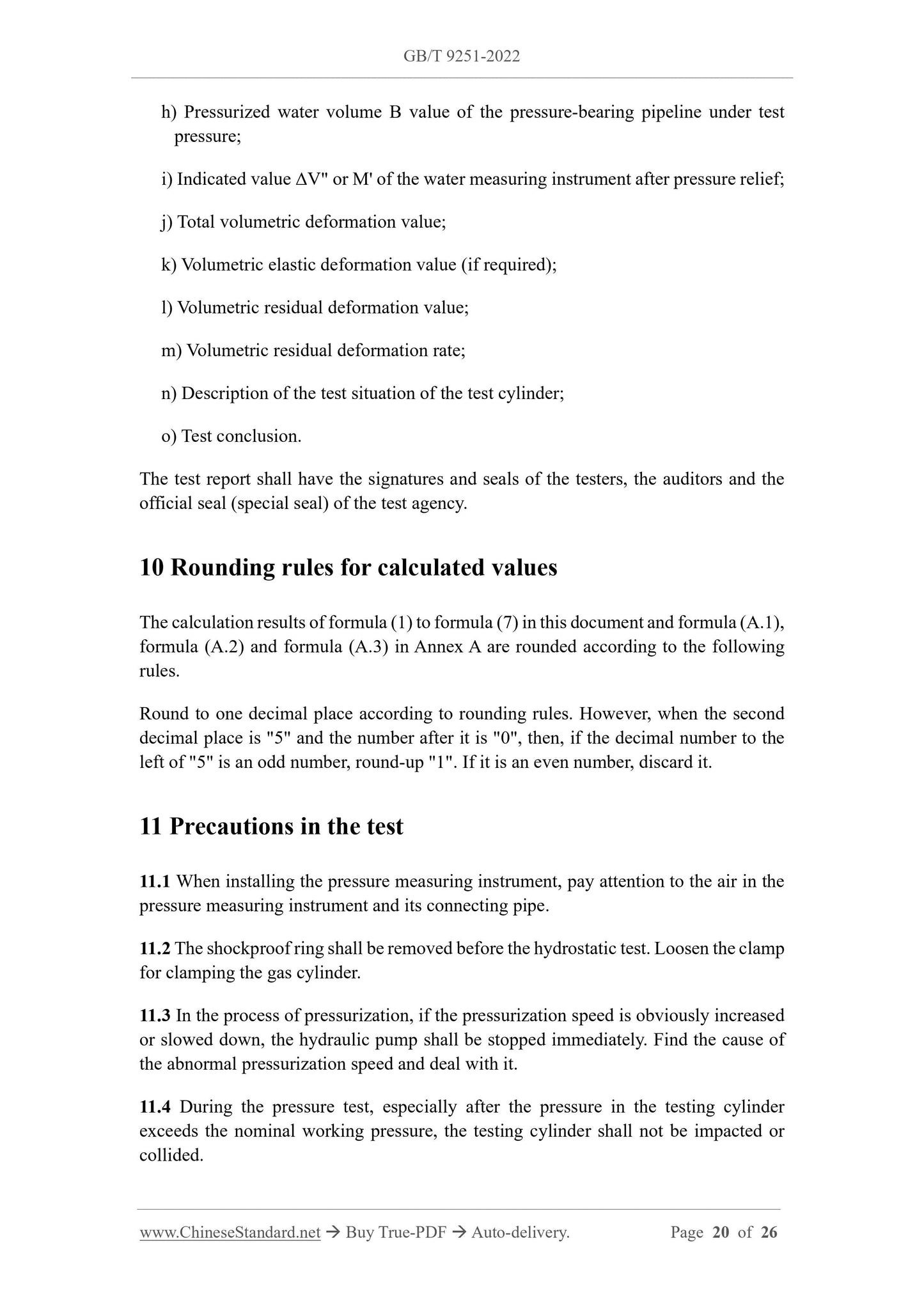1
/
of
11
www.ChineseStandard.us -- Field Test Asia Pte. Ltd.
GB/T 9251-2022 English PDF (GB/T9251-2022)
GB/T 9251-2022 English PDF (GB/T9251-2022)
Regular price
$260.00
Regular price
Sale price
$260.00
Unit price
/
per
Shipping calculated at checkout.
Couldn't load pickup availability
GB/T 9251-2022: Methods for hydrostatic test of gas cylinders
Delivery: 9 seconds. Download (and Email) true-PDF + Invoice.Get Quotation: Click GB/T 9251-2022 (Self-service in 1-minute)
Newer / historical versions: GB/T 9251-2022
Preview True-PDF
Scope
This document specifies the basic requirements for hydrostatic test methods and devicesof gas cylinders.
This document is applicable to the hydrostatic test of gas cylinders whose nominal
working pressure is not more than 70MPa (gauge pressure, the same below).
This document does not apply to gas cylinders filled with solid fillers.
Basic Data
| Standard ID | GB/T 9251-2022 (GB/T9251-2022) |
| Description (Translated English) | Methods for hydrostatic test of gas cylinders |
| Sector / Industry | National Standard (Recommended) |
| Classification of Chinese Standard | J74 |
| Word Count Estimation | 18,189 |
| Issuing agency(ies) | State Administration for Market Regulation, China National Standardization Administration |
Share
